#eu trademark registration
Text
There isn’t anything as effective as a trademark for business owners, inventors, and entrepreneurs to protect their work, name, and brand. It’s the best solution for intellectual property preservation. Nonetheless, numerous individuals tend to struggle with the process on the website of the intellectual property office in the UK.
0 notes
Text
Why You Should Register a Trademark in the EU
Registering a trademark in the European Union (EU) is a strategic move for businesses looking to protect their brand across a vast and economically powerful market. The process to register trademark EU offers comprehensive protection, covering all 27 member states with a single application. This not only simplifies the registration process but also provides significant cost savings compared to registering trademarks in individual countries.

Benefits of EU Trademark Registration
When you register a trademark in the EU, you gain exclusive rights to your brand across the entire European Union. This means your trademark is legally protected from infringement in all member states, offering a robust shield against unauthorized use. With the rise of e-commerce and the globalization of business, having a trademark registered in the EU ensures that your brand is secure in one of the world’s largest markets.
Another advantage of EU trademark registration is its simplicity. Instead of filing multiple applications in different countries, you submit a single application to the European Union Intellectual Property Office (EUIPO). Once approved, your trademark is protected across the entire EU. This streamlined process not only saves time but also reduces administrative burdens and costs.
The Registration Process
To register a trademark in the EU, you need to submit an application to the EUIPO. The application should include a clear representation of your trademark and a list of the goods or services you want it to cover. After submission, the EUIPO examines the application, and if no objections or oppositions are raised, your trademark is registered.
Conclusion
For any business looking to expand or operate within Europe, it’s essential to register a trademark in the EU. It’s an investment in your brand’s future, providing the protection and peace of mind needed to grow your business confidently across multiple countries.
#register trademark EU#eu trademark#eu trademark registration#trademark search eu#uk trademark registration
0 notes
Text
Website : https://en.intertaxtrade.com
Intertaxtrade, established in the Netherlands, excels in facilitating international business and assisting individuals in Europe with integrated solutions in tax, finance, and legal aspects. Registered with the Chamber of Commerce, they offer services like company management in the Netherlands, Dutch company accounting, tax intermediation, international tax planning, business law consulting, EU trademark and intellectual property registration, international trade advice, and GDPR compliance. Their expertise in financial and accounting services ensures clients have a clear financial overview, aiding in business success.
Facebook : https://www.facebook.com/intertaxtrade
Instagram : https://www.instagram.com/intertaxtrade/
Linkedin : https://www.linkedin.com/in/ramosbrandao/
Keywords:
company registration netherlands
legal advice online
comprehensive financial planning
financial planning consultancy
international business services
international business expansion strategies
gdpr compliance solutions
international trade consulting
european investment opportunities
gdpr compliance consulting services
in depth financial analysis
gdpr compliance assistance
cross border tax solutions
netherlands business environment
european union business law
dutch accounting services
tax intermediation solutions
international tax planning advice
eu trademark registration services
investment guidance online
business law consultancy
corporate tax services netherlands
financial analysis experts
business immigration support
startup legal assistance online
european market entry consulting
international financial reporting services
business strategy netherlands
tax authority communication support
international business law expertise
dutch commercial law advice
global business strategy services
european business consulting online
international business services platform
expert legal advice online
efficient company registration netherlands
reliable dutch accounting services
strategic tax intermediation
proactive international tax planning
eu trademark registration support
tailored investment guidance
specialized business law consultancy
dynamic international trade consulting
holistic corporate tax services netherlands
streamlined business immigration support
online startup legal assistance
strategic international business expansion
european market entry planning
innovative cross border tax solutions
navigating the netherlands business environment
european union business law insights
accurate international financial reporting
proven business strategy netherlands
exclusive european investment opportunities
seamless tax authority communication
in depth dutch commercial law advice
comprehensive global business strategy
proactive european business consulting
one stop international business services
personalized financial planning solutions
expert legal advice for businesses
quick company registration in netherlands
trustworthy dutch accounting services
strategic tax intermediation solutions
innovative international tax planning
efficient eu trademark registration
tailored investment guidance online
business law consultancy expertise
comprehensive corporate tax services netherlands
thorough financial analysis support
streamlined business immigration assistance
navigating netherlands business environment
european union business law guidance
international financial reporting accuracy
business strategy for netherlands market
european investment opportunities insights
efficient tax authority communication
international business law excellence
dutch commercial law proficiency
global business strategy implementation
european business consulting excellence
comprehensive international business services
proactive financial planning strategies
expert legal advice on international matters
#company registration netherlands#legal advice online#comprehensive financial planning#financial planning consultancy#international business services#international business expansion strategies#gdpr compliance solutions#international trade consulting#european investment opportunities#gdpr compliance consulting services#in depth financial analysis#gdpr compliance assistance#cross border tax solutions#netherlands business environment#european union business law#dutch accounting services#tax intermediation solutions#international tax planning advice#eu trademark registration services#investment guidance online#business law consultancy
3 notes
·
View notes
Text
European trademark protection: ipconsulting.EU
A trademark is a critical way to identify your business with high quality and unique personality in the business world. It is more valuable for traders also who want to enable them and possess their products and services to worldwide recognition. Applying for trademarks with our firm is simple, and EU trademark protection allows you to grow your business internationally.
European trademark registration is a scheme that allows individual and business trademark holders to protect their brands in all 27 EU member states.
It is a primary and planned process that provides traders with complete protection of their business rights. Ipconsulting’s expert advisors provide businesses with detailed information on this investment and guide them in all aspects of the registration process.
There are many advantages of EU trademark registration:
This registration offers businesses to easily set-up their goods and services on the global market with the help of this license. There are able to work globally.
Businesses can legally and privately guard their marks against being used unfairly by other parties or enterprises thanks to European trademark protection.
You will be appropriately guided in registering and obtaining your company license with the help of our services. We also assist you with the many steps of the registration process and provide thorough information on the advantages of European trademark protection. You can use our services more quickly and smoothly.
The procedure of requesting European trademark protection can be challenging in and of itself. For traders, approving the application by the numerous rules, techniques, and courses may take a lot of time and work, but IP consultancy can help. You can quickly register your name in the trademark list by consulting the EU's experienced consultants. We provide you with correct and complete documentation information to make your application quickly registered.
One of the benefits of our services is that European trademark protection services give you eligibility to trade and expand your business to countries other than European Union. This gives you more opportunities in the worldwide market to achieve more clients.
Conclusion
In conclusion, the EU trademark protection is the right way for businesses to promote their services worldwide. We are an IP consulting company that provides merchants the full advantages of European trademark protection to grow their business level!
#EU Trademark Protection#EU Registered Community Design Search#European trademark registration#Europe trade mark search
0 notes
Text

Sam Heughan’s Sassenach whisky brand loses the final legal fight in a trademark dispute in the European Union 🇪🇺
Sam Heughan launched his whisky brand "The Sassenach" in 2020, nickname his character uses for his on-screen love interest in the time travel drama "Outlander". Since 2021, Heughan has been embroiled in a legal battle with "Sasse" a German distillery over the name of his whisky brand, arguing that the Sassenach whisky would confuse customers who might think he is linked to them.
The European Union Intellectual Property Office (EUIPO), which resolves trademark disputes, ruled in favour of the German company and issued a decision upholding the opposition saying The Sassenach could not use the name as a whisky brand. After losing the initial decision at the Fifth Board of Appeals in 2021, Heughan's legal team appealed in 2022 to overturn the decision.
His legal team said there was no risk of confusion as Outlander was popular in Germany. Lawyers for the Sasse distillery, however, said: "The television series may be as popular as the other side claims, which we deny, nonetheless it is not sufficient to assume that the average consumer knows the meaning of that term. Both parties in litigation were given time to present evidence and arguments in their defence and after the Examination period, the Opposition Division’s decision was taken this year 2023.
Great Glen Company or its representative never commented on the EU decisions until last October, in New York when Sam Heughan was asked about Sassenach whisky situation in the European Union in a chat with Mark Gillespie at the Whisky Cast podcast and Heughan's response was very limited, deflecting the question talking about the name in dispute but not the EUIPO's decision, regarding Sassenach whisky that was supposedly aware of the official communication from the European Union Intellectual Property Office - Opposition Division- sent to Great Glen Company in July 2023, which considered that the disputed trademark 'The Sassenach' must be rejected for all the contested goods.
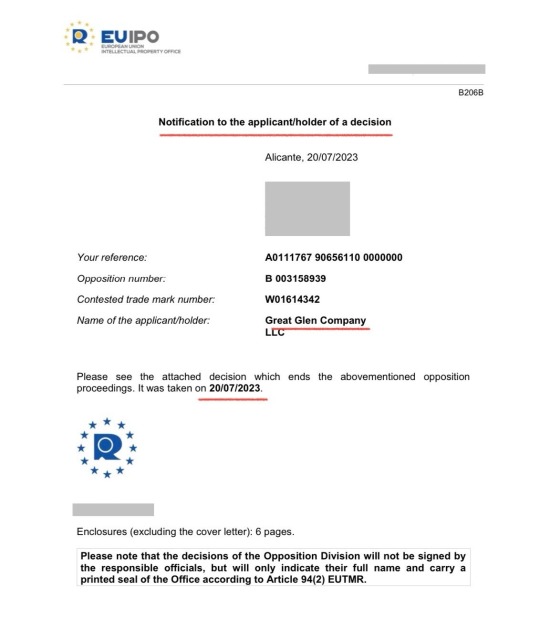
It's a bit curious that after the EUIPO decision, Sam Heughan appeared on a surprise visit to New Orleans, which included podcasts, and events with @sgwinespirits on Tales of the cocktail with an unscheduled tasting of his drinks at the Ritz-Carlton in Nola. Later on, he began his Sassenach sales tour around the United States last summer. If these people had known what had happened with his Sassenach brand in the EU would be different?
In addition, Great Glen Company (GGC) applied to register a new trademark with the World Intellectual Property Organisation (WIPO) and the EU, following the EUIPO decision, following its earlier idea to build on all the Outlander ideas, the new trademark is called "LALLYBROCH SPIRITS" (Lallybroch means "lazy tower" in Gaelic). It will not use Midhope/Lallybroch as a distillery. This new trademark has nothing to do with or relate to the grounds of Midhope Castle, the site of a new whisky distillery with a different brand and ownership. Its new application is already registered in the United States.
It's pending resolution in the EU, Canada and the United Kingdom where Heughan requested its registration.
WIPO

EUIPO
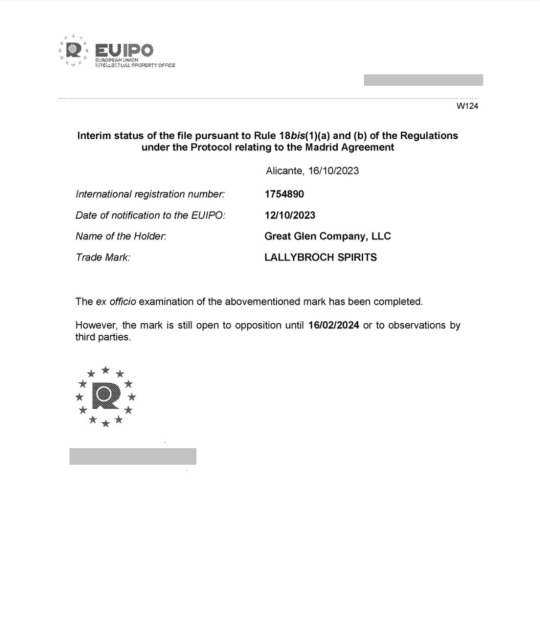
THE SASSENACH UNIQUE SPIRITS
The Great Glen Company, Sam Heughan’s firm, applied to register the brand name Scotch whisky THE SASSENACH UNIQUE SPIRITS as a future trademark to sell the whisky across Europe, but Theo Sasse e.K brand distillery in Schöppingen-Germany, objected claiming the name was too close to its trademarked name, which it uses to sell whiskies and brandies spirits.
On 20th July 2023 the Opposition Division takes the following:
DECISION
1. Opposition is upheld for all the contested goods.
2. International registration is entirely refused protection in respect of the European Union.
REASONS
On 24th November 2021 the opponent Theo Sasse e.K filed an opposition against all the goods (Class 33) of international registration designating the European Union. The opposition is based on, inter alia, German trademark registration ‘Sasse’ (word mark). Also, the opponent invoked Article 8(1)(b) EUTMR and Article 8(4) EUTMR.
LIKELIHOOD OF CONFUSION — ARTICLE 8(1)(b) EUTMR
A likelihood of confusion exists if there is a risk that the public might believe that the goods or services in question, under the assumption that they bear the marks in question, come from the same undertaking or, as the case may be, from economically linked undertakings.
The opposition is based on more than one earlier trade mark. The Opposition Division finds it appropriate to first examine the opposition in relation to the opponent’s German trade mark registration.
a) The goods
The goods on which the opposition is based are, inter alia, the following:
Class 33: Alcoholic beverages, excluding beers. Alcoholic beverages, except beer are identically contained in both lists of goods (including synonyms).
b) Relevant public — degree of attention
The average consumer of the category of products concerned is deemed to be reasonably well informed and reasonably observant and circumspect. It should also be borne in mind that the average consumer’s degree of attention is likely to vary according to the category of goods or services in question. In the present case, the goods found to be identical are directed at the public at large.
c) The signs
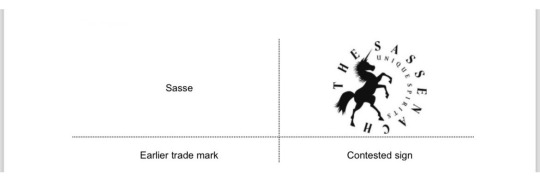
The relevant territory is Germany.
Contested sign The global appreciation of the visual, aural or conceptual similarity of the marks in question must be based on the overall impression given by the marks, bearing in mind, in particular, their distinctive and dominant components. The earlier mark is the word mark ‘Sasse’. The protection of a word mark concerns the word as such and not the specific graphic or stylistic elements accompanying that mark.
The verbal element ‘SASSENACH’ of the contested mark has, contrary to the allegations of the holder, no meaning for the relevant public and is, therefore, distinctive. Likewise, the unicorn device of the contested sign has no particular meaning in relation to the goods and is distinctive.
THE SASSENACH’ in the contested sign are the dominant elements as they are the most eye-catching.
Visually, the signs coincide in ‘SASSE’, which represents the entire earlier mark. The signs differ in the representation of a unicorn and the additional letters ‘-NACH’ (after SASSE) and the non-distinctive elements ‘The’ as well as ‘UNIQUE SPIRITS’ in the contested mark. Thus, the single word element of the earlier mark is fully contained in the most distinctive verbal element of the contested mark. That fact alone is a clear indication of a visual similarity. Therefore, the signs are similar to a below-average degree.
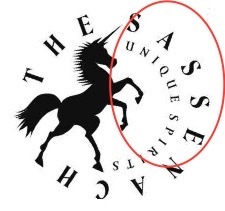
Aurally, the signs coincide in the syllables ‘Sas-se’, which is the sole and distinctive element of the earlier mark and the beginning of the most important verbal element of the contested sign, ‘Sas-se-nach’. The signs differ in the last letters of this word (one syllable), ‘nach’, and in the first verbal element of the contested sign, ‘The’. The fact remains that the earlier mark is entirely included at the beginning of the most important verbal element of the contested sign.
Conceptually, the signs will always be dissimilar as the contested mark will be understood with at least one meaning, namely the unicorn in the contested mark. As the signs have been found similar in at least one aspect of the comparison, the examination of likelihood of confusion will proceed.
d) Distinctiveness of the earlier mark The distinctiveness of the earlier mark is one of the factors to be taken into account in the global assessment of likelihood of confusion. In the present case, the earlier trade mark as a whole has no meaning for any of the goods in question from the perspective of the public in the relevant territory. Therefore, the distinctiveness of the earlier mark must be seen as normal.
e) Global assessment, other arguments and conclusion The goods at issue are identical. They target the general public, who possesses an average degree of attention. The earlier mark has a normal degree of distinctiveness. The signs are visually similar to a below average degree and aurally similar to an average degree since the sole and distinctive element of the earlier mark, ‘Sasse’, is entirely reproduced at the beginning of the contested sign’s only fully distinctive verbal element, ‘Sassenach’. Evaluating the likelihood of confusion implies some interdependence between the relevant factors and, in particular, a similarity between the marks and between the goods or services.
Considering all the above, especially taking into account that the earlier mark is entirely reproduced in the contested sign and used for goods that are identical, the Opposition Division finds that there is a likelihood of confusion on the part of the public. Therefore, the opposition is well founded on the basis of the opponent’s German trade mark registration It follows that the contested trade mark must be rejected for all the contested goods. As the earlier right German trade mark registration leads to the success of the opposition and to the rejection of the contested trade mark The Sassenach for all the goods against which the opposition was directed.
The trademark status was "totally refused", meaning that THE SASSENACH UNIQUE SPIRITS trademark cannot be registered in the EU. If SH's trade mark application is refused, he can file an appeal. He must file his notice of appeal within 2 months from the date of the refusal decision (August-September) and the grounds of appeal must be filed within 4 months from the same date of notification (October-November). But, He did not appeal and last November the EUIPO confirmed by letter the provisional refusal of his trademark and refused its protection in the European Union. The final decision was published on 14 December 2023.

Conclusion
The EUIPO’s decision of the Board of Appeals, regarding its whisky has a “displacement” because Sassenach whisky cannot be registered as a trademark in the EU, the Sassenach trademark was refused. SH must be aware the significance of the total refusal decision regarding its whisky brand. If he was planning to recover from a legal dispute by putting his gin on an impromptu Sassenach tour around US last summer, proving that his recent EU legal battle was a mere bump in the road, he should have thought twice. He lost a legal battle to register his Sassenach whisky brand as a European Community trademark ® in 27 states. It is a big difference. It seems that if Heughan wants to continue selling its whisky, it will have to change the name.
LALLYBROCH SPIRITS registration:
United Kingdom
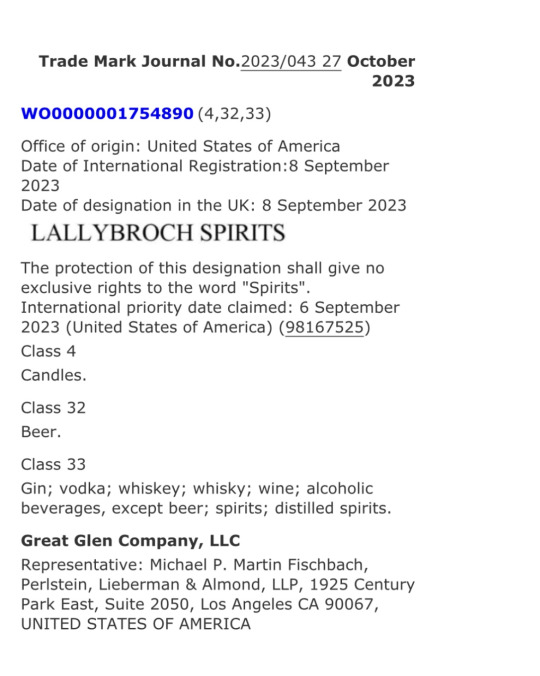
Canada
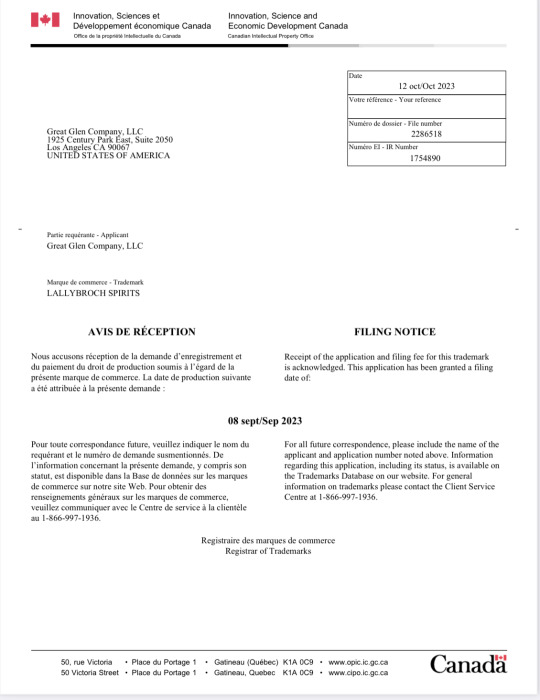
USA
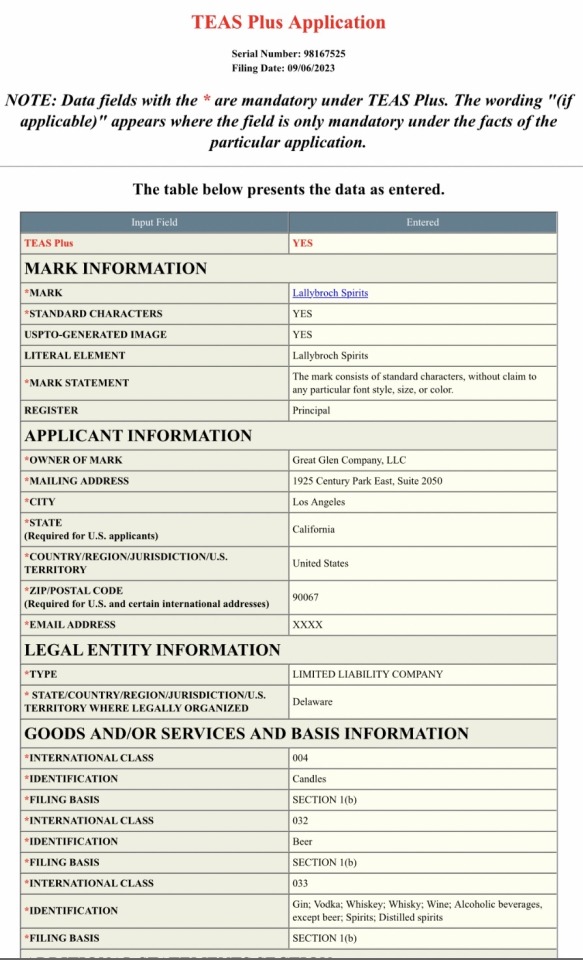
26 notes
·
View notes
Text
The Madrid System for International Registration of Marks
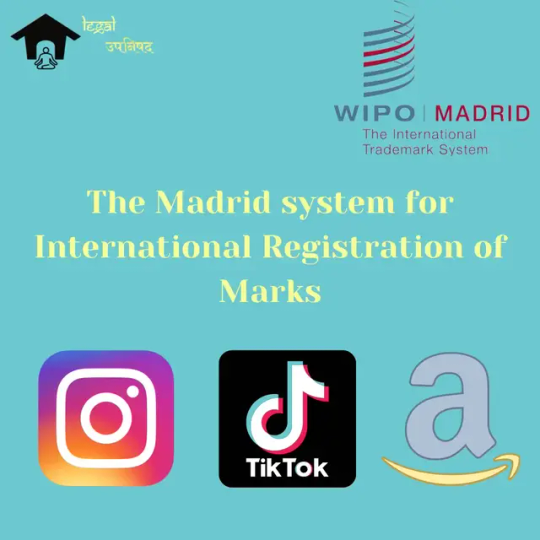
This article on 'The Madrid system for International Registration of Marks' was written by Monika Yadav an intern at Legal Upanishad.
Introduction
In this article, we will know about the Madrid system of trademarks. The Madrid System seems to be a practical and economical way to register and maintain trademarks globally. To file for safety in as many as 128 nations, just submit one application as well as pay a single amount of fee. Utilize a single, centralised system to update, refresh, or increase your global trademark inventory. We will understand the Madrid protocol and also the Madrid agreement. India is also a member, and we see the workings of the system and then conclude our article.
What does it mean?
Two separate treaties, the Madrid Agreement and the Madrid Protocol oversee the registration of trademarks in various jurisdictions worldwide. Although it bears the name "Protocol," it is not a "protocol" to the Agreement but rather a separate agreement. The Madrid System for the International Registration of Marks is what the Agreement and the Protocol are collectively referred to as the Madrid System.
The term "Contracting Parties" refers to all States and organisations that are parties to the Protocol and/or the Agreement. They collectively make up the Madrid Union, which is a Special Union following Article 19 within the Paris Convention. The Madrid System is a method for acquiring a collection of trademark registrations in numerous states that are professionally managed by the International Bureau of the World Intellectual Property Organization (WIPO), effectively establishing a foundation for an "international registration" of marks.
The Madrid Agreement
To enable the need to file, seek, or maintain separate registrations in many countries is eliminated by a single, affordable worldwide trademark registration. The Agreement was established in 1891. Whenever a mark is registered as per the Agreement, having the exact legal impact as if the mark owner had decided to register it in one of the member countries. If the targeted country's trademark office neglects to notify WIPO of a denial of registration within the allotted 12-month period, the trademark will be protected to the same extent as authorized national trademarks in the same nation (but as per Protocol it extends to 18 months).
The Agreement calls for a simplified renewal procedure because WIPO only needs one file for both renewals as well as modifications to the primary registration which impact all of the nations included here by registration.
Regardless of the benefits of registration under the Agreement, the US and other important nations (including Australia, Denmark, Finland, Greece, Iceland, Ireland, Japan, Netherlands, Republic of Korea, Sweden, and the United Kingdom) had not ratified it because of purported structural issues. These so-called flaws allegedly included things like the requirement for home country registration even before the granting of mark safety, infinite limitations on assignability, a chance of a "central attack" on the mark, a brief inquiry time, evaluation costs that were less expensive than those currently charged by the native nation's mark offices.
The Madrid Protocol
To address such alleged flaws within the Agreement, the Protocol was approved in 1989. However, the Protocol upholds the Agreement's original goal, which was to establish a mechanism for quick and affordable worldwide trademark registration. As a result, although there are currently only 57 signatories to the agreement, 74 nations, including the USA, were part of either the Agreement or the Protocol.
India as a member
A trademark holder might also use their Community Trademark (CTM) to preserve their mark through 88 Contracting Parties and the EU under the Madrid system, which is administered by WIPO, by filing a specific application in one of three languages (English, French, or Spanish), in addition to a limited piece of fees in a single currency (Swiss Francs). India adopted the Madrid Protocol on April 8, 2013, and it joined on July 8, 2013, increasing the overall number of parties to 90.

The Madrid system for International Registration of Marks
The Working
With the help of the Madrid System's "Basic Application / Registration" method, a trademark owner who has filed for registration or already has a registration in a member country may receive "International Registration" for their brand from WIPO. After that, the mark's owner has the option of choosing "International Registration," also known as "Designation," to get protection in one or more member nations.
Furthermore, thanks to the Madrid Protocol, a trademark owner can now simultaneously apply for registration across any partner jurisdiction and receive "International Registration" by force of the Madrid Protocol. By submitting a single application in a single jurisdiction with a limited fee, a trademark owner can register their mark for any or even all member states, make any necessary changes to the information (such as their name or address), and renew their registration in all relevant jurisdictions across a single official bureaucratic system.
The natural reversal of the previously stated Madrid System/Protocol feature is, nevertheless, that if a "Basic Registration/Application" is rejected, cancelled, or revoked, the global registration will likewise be rejected, cancelled, or rescinded to the same level. For illustration, if the "Basic Application" for shampoo is cancelled, the "International Registration" of the exact mark for shampoo is going to be cancelled. This applies to applications for registration of marks for herbal products such as cleansers, face washes, and hair products. The "International Registration" will also be rejected if the "Basic Application" is rejected.
The process of testing a "Basic Application" for registerability is known as a "Central Attack." An "International Registration" (also known as a "Transformation") is split up into several applications in every jurisdiction to reduce the impacts of a successful central attack. This overpriced process is justified, however, in addition to this benefit but also because the applications that arise will use the registration date of the global registration as their date of filing.
Conclusion
The Madrid Express database would be a free tool offered by WIPO to look up international marks. It is modified every day. The database includes interfaces for both basic and structured searches. All global registrations which are active at the moment or have recently been terminated are included in Madrid Express.
WIPO makes all efforts to guarantee about the database accurately portrays the information contained in the Global Registration, but users should be aware that the Gazette is still the only authoritative source and that the only reports issued by the International Bureau about the components of the Global Registration for a specific world registration are the approved substances by the Register recognised upon recommendation.
References
- Vicenc Feliu, International Trademark Law- The Madrid System, Available at: https://www.nyulawglobal.org/globalex/International_Trademark_Law.html (Accessed: November 29, 2022).
- Sharad Saini, The Madrid System for the International Registration of Marks, Available at: https://www.khuranaandkhurana.com/2013/07/16/the-madrid-system-for-the-international-registration-of-marks-madrid-system/?amp=1 (Accessed: November 29, 2022).
- Madrid- The International Trademark System, Available at: https://www.wipo.int/madrid/en/. (Accessed: November 29, 2022).
Read the full article
2 notes
·
View notes
Text
Trademark-R | Register Trademark in UK,EU,USA,Australia, Canada
Are you looking to register trademark in UK, Europe (EU), USA, Australia, Canada, China, Ireland or London? We offer Trademark Registration in UK at very affordable price.
Trademark-R #Trademark #TrademarkUK #UKTrademark #UKBusiness #TrademarkEU #TrademarkUSA
Trademark-R, Trademark, Trademark UK, UK Trademark, UK Business, Trademark EU, Trademark USA

0 notes
Text
Leading Intellectual Property Law Firm for Global Brands

As the premier intellectual property law firm in the UK, Brandsmiths has built a reputation for excellence by acting on behalf of some of the world’s most prominent brands. Specializing in Intellectual Property (IP), we help businesses protect their valuable assets, from trademarks and patents to copyright and designs. With a deep understanding of the complexities of IP law, we provide strategic legal solutions tailored to our clients' unique needs.
Comprehensive IP Protection and Enforcement
At Brandsmiths, we offer comprehensive intellectual property services to safeguard your creations and innovations. Our expertise spans across various industries, including technology, fashion, pharmaceuticals, and consumer goods. We assist clients in registering trademarks, patents, and designs while also offering expert advice on IP strategy and portfolio management. Should your IP rights be infringed, our skilled litigators act swiftly to enforce your rights through negotiations, cease-and-desist letters, and, if necessary, litigation.
Trademark Services for Global Brands
Trademarks are the cornerstone of brand identity, and protecting them is essential for maintaining a strong market presence. Our firm offers extensive trademark services, from registration to enforcement, ensuring that your brand is protected on a global scale. We handle trademark disputes, opposition, and revocation proceedings, leveraging our in-depth knowledge of UK, EU, and international trademark law. By working with Brandsmiths, you gain a trusted partner committed to safeguarding your brand's integrity and reputation.
Expertise in Litigation and Commercial Law
Our firm is also renowned for its expertise in litigation and commercial law. We represent clients in complex legal disputes, ensuring that their interests are protected in court. Whether it’s a breach of contract, shareholder dispute, or commercial litigation, our team of experienced litigators delivers results. We are also skilled negotiators, working diligently to resolve disputes through mediation or arbitration when possible, saving our clients time and resources. In the realm of commercial law, we advise on a range of matters, including corporate governance, mergers and acquisitions, and contractual agreements.
Specialized Legal Services in Sport, Media, and Entertainment
Brandsmiths has a niche specialization in sport, media, and entertainment law, offering legal advice to some of the biggest names in the industry. From sponsorship agreements and broadcasting rights to player transfers and image rights, our team has an unparalleled understanding of the legal complexities involved in this dynamic field. We help clients navigate the commercial and legal challenges in these sectors, ensuring that their intellectual property is protected and their commercial interests are secured.
Conclusion
As the UK's leading intellectual property law firm, Brandsmiths is committed to protecting the rights and interests of global brands. With expertise in Intellectual Property, Trademarks, Litigation, Commercial Law, and Sport, Media & Entertainment, we deliver tailored legal solutions that empower our clients to thrive in a competitive market. Our unwavering focus on excellence and innovation makes us the go-to law firm for safeguarding your brand's future.
0 notes
Text
Discover the Right Legal Partner: Navigating Law Firms in Poland
Poland's legal system, with its rich history and evolving structure, offers robust support for businesses and individuals. Whether you are expanding your business or seeking personal legal assistance, understanding the law firms in Poland is essential. This guide explores types of law firms, services offered, and key considerations for selecting the right legal partner.

Understanding Poland’s Legal Framework
Poland’s legal system, rooted in a civil law tradition, ensures justice through its comprehensive court structure and adherence to constitutional principles.
History and Development
Poland's legal system evolved from Roman law influences, with significant reforms after communism. Key milestones include joining the EU and adopting modern legal standards, reflecting its dynamic history and commitment to justice.
Structure of the Legal System
The Polish legal system comprises district, regional, and supreme courts, with the Constitutional Tribunal ensuring laws conform to the constitution. This multi-tiered structure maintains legal order and addresses various legal issues.
Types of Law Firms in Poland
From comprehensive full-service firms to specialized boutique practices, Polish law firms cater to diverse legal needs.
Full-Service Law Firms
Full-service law firms in Poland, such as Dentons and CMS Cameron McKenna, provide a wide range of legal services, from corporate law to litigation, offering comprehensive solutions for complex legal matters.
Boutique Law Firms
Boutique law firms specialize in specific legal areas like intellectual property or family law, offering personalized and expert services. Their focused approach allows for tailored solutions and close client relationships.
International Law Firms
International law firms with a presence in Poland combine global reach with local expertise. They cater to multinational corporations, providing cross-border legal services and helping navigate international regulations.

Extensive Legal Services for Diverse Needs
Polish law firms offer a broad spectrum of legal services to meet the needs of various clients, from businesses to individuals.
Corporate and Commercial Law
Services include company formation, corporate governance, mergers and acquisitions, and contract negotiations. Firms help businesses comply with regulations and navigate complex commercial transactions.
Civil Litigation and Dispute Resolution
Law firms handle civil cases, offering representation in court and alternative dispute resolution methods like arbitration and mediation, aiming for efficient and fair outcomes.
Criminal Law
Criminal defense services cover representation in criminal proceedings, legal advice, and defense strategies. Law firms ensure clients' rights are protected throughout the judicial process.
Real Estate Law
Real estate services include handling property transactions, legal due diligence, and navigating land use regulations, ensuring smooth and legally compliant property dealings.
Employment Law
Firms draft and review employment contracts, manage labor disputes, and ensure compliance with labor laws, protecting the interests of both employers and employees.
Family Law
Family law services cover divorce, child custody, prenuptial agreements, and mediation, providing sensitive and effective legal solutions for personal and familial matters.
Intellectual Property Law
Firms assist with trademark and patent registration, IP litigation, and enforcement, helping protect and manage intellectual property rights.
Navigating Regulatory and Compliance Challenges
Expert legal guidance ensures businesses comply with Poland’s regulatory environment, minimizing risks and maximizing efficiency.
Regulatory Environment in Poland
Key regulatory bodies include the Office of Competition and Consumer Protection (UOKiK) and the Financial Supervision Authority (KNF). Firms help clients navigate compliance requirements, reducing legal risks.
Services Provided
Regulatory compliance audits and risk management strategies ensure businesses adhere to laws and regulations, safeguarding against penalties and enhancing operational efficiency.
Choosing the Right Law Firm for Your Needs
Selecting the appropriate law firm involves assessing expertise, reputation, and client reviews to ensure alignment with your legal needs.
0 notes
Text
Trademark Registration Process
The legal process of securing the owner's exclusive right to use a specific symbol, term, phrase, design, or combination to identify and set their goods and services apart is known as trademark registration. This is a thorough description of the steps involved in registering a trademark:

Initial Trademark Search Steps:
Make sure the trademark is distinct and not currently in use by conducting a comprehensive search. By doing this, disputes and other legal problems are avoided.
Submitting the Application Preparing the Application:
Choose a regular character mark (text only) and a special form mark (logo, design) for your trademark.
Determine the products or services that are linked to the trademark and are categorized using the Nice Classification system.
Send in the Application
Apply to the appropriate trademark office, such as the European Union Intellectual Property Office (EUIPO) in the EU, the United States Patent and Trademark Office (USPTO) in the US, or other national/regional offices.
Give the necessary details, such as the owner's identity, a list of the goods and services, a representation of the trademark, and the reason for filing (use in commerce or intent to use).
Exam Procedure
Official Review: The application is examined by the trademark office to make sure it conforms with official specifications.
Comprehensive Analysis: The office verifies that the application is unique and looks for trademark disputes.
Publishing and Counterpublications:
The public is informed when an application passes an examination and is published in a journal or official gazette.
Time of Opposition: a predetermined window of time, usually between 30 and 3 months, during which outside parties may submit an objection if they disagree that the trademark should be registered.
Enrollment:
Absence of Resistance or a Viable Resolution:
The trademark moves on to registration if no opposition is lodged or if opposition is dismissed in the applicant's favor.
The awarding of a certificate:
A registration certificate, which confers exclusive rights to the trademark, is issued by the trademark office.
Post-Registration Upkeep and Extension:
Generally, trademarks must be renewed regularly (every ten years in many jurisdictions).
Certain countries need periodic proof of use to keep the registration active.
Observation and Implementation:
Keep a regular eye out for any possible violations in the market.
Protect your trademark rights by going to court if required.
Madrid System for International Trademark Registration:
Regulated by the World Intellectual Property Organization (WIPO), which enables the submission of a single application to request protection across several of its member nations.
just a simple application and registration in the nation of origin.
Submit a worldwide application via the trademark office of your native nation.
The application is sent by WIPO to the chosen member nations for review and registration.
Businesses and individuals can obtain trademark protection by following these steps, guaranteeing that their brand identity is legally protected and solely theirs.
To know more information visit at www.corpbiz.io or can Contact on 9121230280
0 notes
Text
Expanding Your Brand Globally: A Guide to International Trademark Registration
Expanding your brand into international markets is an exciting and lucrative venture. However, with the global reach comes the crucial responsibility of protecting your brand identity. Trademarks, which include logos, slogans, and brand names, are fundamental assets that distinguish your products or services from competitors. Securing international trademark registration is essential to safeguard your brand across borders.
This comprehensive guide will walk you through the process, delivering valuable insights and practical steps for successful international trademark registration.

Understanding Trademarks and Their Importance
What is a Trademark?
A trademark is a symbol, word, or group of words legally registered or established by use as representing a company or product. It can include names, logos, slogans, sounds, and even colors that distinguish your goods or services from others in the market.
Why are Trademarks Important?
Brand Identity: Trademarks help consumers identify and differentiate your products from others, fostering brand loyalty.
Legal Protection: They provide legal protection against unauthorized use of your brand elements.
Business Asset: Trademarks are valuable intangible assets that can be appreciated over time.
Market Expansion: They enable smoother entry into new markets by protecting your brand in foreign jurisdictions.
Preparing for International Trademark Registration
Conducting a Trademark Search
Before filing for trademark registration, it’s crucial to conduct a comprehensive trademark search in your target markets. This step helps to ensure that your trademark is unique and not already in use, preventing potential legal disputes and rejection of your application.
Steps to Conduct a Trademark Search:
Identify Classes: Trademarks are categorized into different classes based on the type of goods or services. Identify the appropriate classes for your trademark.
Use Online Databases: Utilize online trademark databases such as the World Intellectual Property Organization (WIPO) Global Brand Database, the United States Patent and Trademark Office (USPTO) database, and other national databases to search for existing trademarks.
Professional Assistance: Consider hiring a trademark attorney or a professional search service to ensure a thorough search.
Evaluating Trademark Eligibility
Not all trademarks are eligible for registration. Your trademark must be distinctive, not descriptive or generic, and must not conflict with existing trademarks. Additionally, it must not contain misleading or offensive content.
Choosing the Right Markets
Identify the countries where you plan to expand and where trademark protection will be beneficial. Consider factors such as market potential, brand relevance, and local trademark laws. Prioritize countries with significant market opportunities and those where your brand is most likely to face competition or imitation.
Pathways to International Trademark Registration
There are several pathways to register your trademark internationally, each with its advantages and disadvantages. The choice depends on your business needs, budget, and target markets.
National Applications
You can file individual trademark applications directly with each country’s trademark office. This method allows for tailored applications according to specific national laws but can be time-consuming and expensive if you target multiple countries.
Pros:
Customized protection tailored to each country’s laws.
Direct communication with national trademark offices.
Cons:
High costs and administrative burden.
Varied registration procedures and timelines.
Regional Applications
For regions with unified trademark systems, such as the European Union (EU) and the African Intellectual Property Organization (OAPI), you can file a single application that covers all member countries.
Pros:
Simplified process for multiple countries within the region.
Cost-effective for regional protection.
Cons:
Limited to specific regions.
If opposed in one country, it can affect the entire application.
The Madrid System
The Madrid System, administered by WIPO, offers a centralized solution for registering trademarks in multiple countries through a single application. It currently covers over 120 countries, making it an efficient choice for broad international protection.
Pros:
Single application and fee for multiple countries.
Simplified management and renewal process.
Flexibility to designate additional countries later.
Cons:
Dependent on the basic application/registration in the home country for the first five years.
Not all countries are members.
Steps to Register Your Trademark Internationally Using the Madrid System
Basic Application or Registration
To use the Madrid System, you must first have a trademark application or registration in your home country (known as the basic application or basic registration). This serves as the foundation for your international application.
Filing the International Application
Submit your international application through your home country’s trademark office (Office of Origin). The application must include:
Your details and signature.
Representation of the trademark.
List of goods and services categorized according to the Nice Classification.
Designation of member countries where you seek protection.
Examination by WIPO
WIPO examines the application for compliance with formal requirements and then publishes it in the WIPO Gazette of International Marks. It then forwards the application to the trademark offices of the designated countries.
Examination by Designated Countries
Each designated country’s trademark office examines the application according to its national laws. They may approve, partially refuse, or completely refuse the application. You must respond to any refusals or objections within the given timeframe.
Registration and Protection
Once approved by a designated country, your trademark is protected in that country as if it were registered directly with its trademark office. The protection period is generally 10 years, with the possibility of renewal.
Managing and Enforcing International Trademarks
Renewing Your Trademark
Trademark registrations must be renewed periodically, typically every 10 years. The Madrid System allows you to manage renewals centrally, simplifying the process for multiple countries.
Monitoring and Enforcement
Regularly monitor the use of your trademark in international markets to detect unauthorized use or infringement. Take swift legal action against infringers to protect your brand’s integrity. Consider using trademark watch services and engaging local legal counsel for enforcement actions.
Licensing and Franchising
Consider licensing or franchising your trademark to third parties in foreign markets. This can provide additional revenue streams while expanding your brand’s presence. Ensure that license agreements are carefully drafted to protect your trademark rights and maintain quality control.
Tips for Successful International Trademark Registration
Seek Professional Assistance
Trademark registration, especially internationally, can be complex. Engage experienced trademark attorneys or agents who specialize in international trademark law to navigate the process effectively.
Plan Ahead
Trademark registration can take time, often several months to years. Plan your registration strategy well in advance of entering new markets to ensure your brand is protected when you launch.
Be Consistent
Maintain consistency in your trademark usage across all markets. This includes using the same logo, slogan, and brand name. Consistent usage strengthens your brand identity and legal protection.
Understand Cultural Differences
Be aware of cultural differences and language translations that may affect your trademark. Ensure that your trademark does not have unintended negative connotations in different languages or cultures.
Keep Records
Maintain comprehensive records of your trademark registrations, renewals, and enforcement actions. This documentation is vital for managing your trademark portfolio and defending your rights.
Final Words
Expanding your brand globally presents tremendous opportunities for growth and increased market presence. However, it also requires meticulous planning and proactive measures to protect your brand identity. International trademark registration is a critical step in this process, safeguarding your brand from infringement and ensuring legal protection in foreign markets.
By conducting thorough trademark searches, understanding the various pathways to registration, and effectively managing your trademarks, you can navigate the complexities of international trademark registration with confidence. Seek professional assistance, plan, and stay vigilant in monitoring and enforcing your trademark rights. With the right strategy, your brand can thrive on the global stage, enjoying the benefits of expanded reach and recognition.
Embark on your journey of global expansion with the assurance that your brand is well-protected, paving the way for sustained success and growth in the international arena.
0 notes
Photo
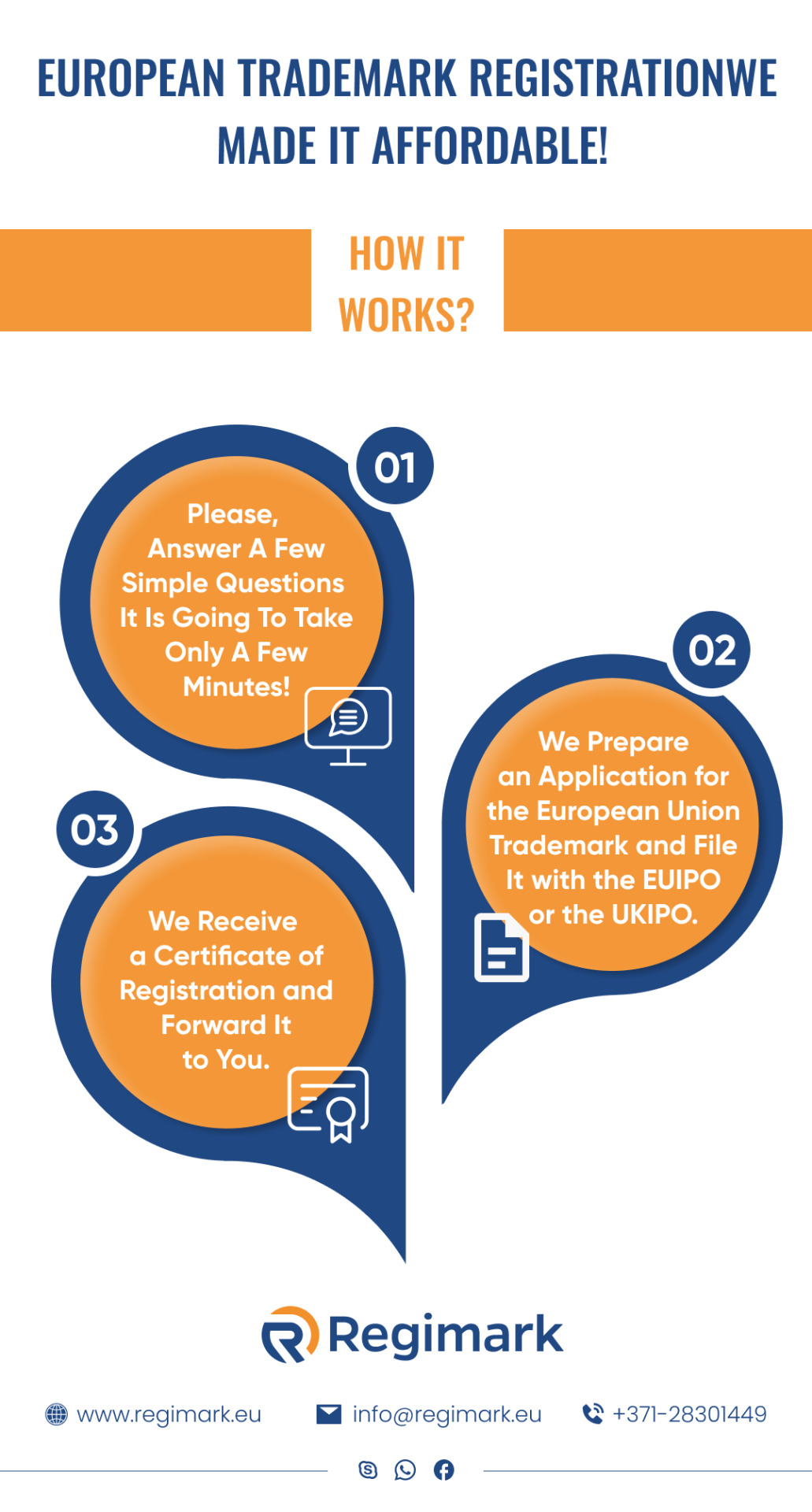
European Trademark Registration - How it Works?
The European Union trademark (EUTM) registration is an efficient and cost-effective procedure for obtaining trademark rights in the European Community. The EUTM System runs parallel to the trade mark legislation of each national EU member state. Registration is confirmed by the issuance of the trademark registration certificate. Know more details at: https://regimark.eu/eutm-registration/.
0 notes
Text
https://www.classifiedads.com/attorneys/4xf8bzt9d3dcc
0 notes
Text

A Guide to Starting Your Own Skin Care Products Business
In recent years, the skincare industry has experienced exponential growth, driven by increasing awareness of skin health and beauty. If you're passionate about skincare and dream of starting your own business in this field, now is an opportune time to turn your aspirations into reality. Here's a comprehensive guide to help you kickstart your journey into the world of skincare product entrepreneurship.
Research and Planning
Market Analysis: Begin by researching the skincare market to identify trends, target demographics, and potential competitors. Analyze consumer preferences, emerging ingredients, and popular product categories to understand where your business can thrive.
Identify Your Niche: With a saturated market, finding a unique selling proposition (USP) is crucial. Consider specializing in organic, vegan, or cruelty-free products, targeting specific skin concerns like acne or aging, or catering to a particular demographic segment such as men or teenagers.
Product Development: Invest time and resources in developing high-quality skincare formulations. Partner with experienced chemists or formulators to create effective and safe products using proven ingredients. Conduct thorough testing to ensure efficacy, safety, and compliance with regulatory standards.
Legal and Regulatory Compliance
Business Registration: Register your skincare products business with the appropriate authorities in your country or region. Choose a legal structure such as sole proprietorship, partnership, or LLC (Limited Liability Company) based on your preferences and legal requirements.
Intellectual Property Protection: Consider trademarking your brand name, logo, and product formulations to safeguard your intellectual property rights. Consult with a legal expert to understand patent requirements and other legal considerations specific to the skincare industry.
Compliance with Regulations: Familiarize yourself with regulations governing the manufacturing, labeling, and marketing of skincare products. Ensure compliance with standards set by regulatory bodies such as the FDA (Food and Drug Administration) in the United States or the EU Cosmetics Regulation in Europe.
Branding and Marketing
Brand Identity: Develop a compelling brand identity that resonates with your target audience. Choose a memorable brand name, design a visually appealing logo, and craft a compelling brand story that communicates your values, mission, and commitment to skincare excellence.
Product Packaging: Invest in attractive and functional packaging that reflects your brand aesthetic and appeals to consumers. Consider eco-friendly packaging options to align with sustainability trends and attract environmentally-conscious customers.
Online Presence: Establish a strong online presence through a professional website and active presence on social media platforms like Instagram, Facebook, and Pinterest. Share engaging content, including skincare tips, product tutorials, and user-generated content to foster community engagement and brand loyalty.
Distribution and Sales
Retail Partnerships: Explore opportunities to collaborate with retail partners such as beauty salons, spas, boutiques, and specialty stores to distribute your skincare products. Attend trade shows and industry events to network with potential partners and showcase your products.
E-commerce Platforms: Leverage e-commerce platforms like Shopify, WooCommerce, or Amazon to sell your skincare products online. Optimize your product listings with high-quality images, detailed descriptions, and customer reviews to maximize visibility and sales.
Direct Sales Channels: Consider implementing a direct-to-consumer (DTC) sales model through your website or subscription-based services. Offer incentives such as discounts, loyalty programs, and free samples to attract and retain customers.
Continuous Improvement
Customer Feedback: Listen to customer feedback and reviews to identify areas for improvement and innovation. Use surveys, focus groups, and social media monitoring tools to gather valuable insights into customer preferences and expectations.
Stay Informed: Stay abreast of industry trends, scientific research, and technological advancements in skincare ingredients and formulations. Attend seminars, workshops, and conferences to expand your knowledge and network with industry experts.
Adapt and Innovate: Remain flexible and adaptable to changes in consumer preferences, market dynamics, and regulatory requirements. Continuously innovate your product offerings, marketing strategies, and business processes to stay ahead of the competition and sustain long-term growth.
0 notes
Text
EU trademark protection: IP consulting
An EU trademark is a symbol that may be registered to shield your emblem in all 27 member states of the European Union. This method that when you've got registered your EU trademark, you may use it exclusively in any of the EU member states, and save you others from using it with out your permission.
What types of signs can be registered as EU trademarks?
Any sign can be registered as an EU trademark protection, as long as it is distinctive and can be represented graphically. This means that words, phrases, images, symbols, sounds, and even shapes can be registered as EU trademarks.
What are the benefits of having an EU trademark?
There are many benefits to having an EU trademark, including:
Exclusive rights in all 27 EU member states: Once your EU trademark is registered, you will have the exclusive right to use it in all 27 EU member states. This means that you can prevent others from using your trademark without your permission.
A strong brand image: A registered EU trademark can help you to build a strong brand image and reputation. This is because consumers are more likely to trust and buy from brands that they know and recognize.
Protection from counterfeiting and infringement: An EU trademark can help to protect your brand from counterfeiting and infringement. This is because you can take legal action against anyone who uses your trademark without your permission.
How do I register an EU trademark?
To register an EU trademark, you need to file an application with the European Union Intellectual Property Office (EUIPO). The EUIPO will then examine your application to make sure that it meets all of the requirements for registration. If your application is successful, your EU trademark will be registered.
How can I get help with EU trademark protection?
If you are considering registering an EU trademark protection, it is important to seek professional advice from an IP consultant. An IP consultant can help you to assess whether your trademark is distinctive and eligible for registration, and can help you to file your application with the EUIPO.
Conclusion
EU trademark protection is an important manner to protect your logo and business inside the European Union. If you are considering registering an EU trademark, it is essential to searching for professional advice from an IP representative.
#EU trademark protection#European Trademark Attorney#Industrial Design RCD#European community trademark search
0 notes
Text

Maybe it means that no matter how hard you try you can’t change reality to suit your needs. 🤔
Merely making external improvements in The Sassenach brand cannot conceal or change the decision-making about his trademark in the EU. Once the shine of its brand, The Sassenach, faded last year in the EU, SH cannot add more glitter to the brand as it wished in the EU.
He has made sales in his online shop with regular customers (fans) and has also liaised with friends who own restaurants in Scotland 🏴 to sell his alcohol in an attempt to enter the UK market.
However, in the European Union 🇪🇺 Only by registering your trademark do you obtain legal rights over it, make exclusive use of it in the whole territory of the European Union and prohibit its use by unauthorised third parties. But the registration of the Sassenach was refused in the EU*
If you constantly post about your booze...99.9%, you still miss it. Stop fooling yourself and others.

Why is important a European Union’s trademark?
European Union’s trademark ® system (formerly known as the “community trademark”) has been operational since 1996, its registration provides protection for a trademark in the 27 member states of the European Union 🇪🇺
The EU trademark system is an alternative to filing national trademark applications in each Member State of the European Union, making it a much faster and cheaper system of protection. Trademarks like patents, are territorial rights, so their effects only can extend to the territory or territories where protection is requested.
As the European Union is currently made up of 27 member states, When new countries join the European Union, EU trademark protection will also extend to those countries. The European Union trademark system does not allow certain countries to be left out of trade mark protection. For example, an applicant who is going to use the trademark in ten countries will not be able to exclude the remaining seventeen.
Among the advantages, we can highlight its agility, time and cost savings in the process (a single application for registration for all states). In today's digital environment, where borders do not exist, it is more important than ever to establish a good trademark protection strategy to avoid possible copying or misuse of trademarks.
Registering a trade mark in the EU can avoid possible future conflicts. It implies the possibility that, as long as the trademark meets the requirements set out in the Community Trade Mark Regulation and there is no earlier identical or similar trademark registration application, and it can be granted for all countries at the same time. Therefore, it must be borne in mind that the viability of such a trademark registration will be reviewed by each of the 27 countries.
By registering an EU trademark, you obtain an exclusive licence for a trademark throughout the European Union and can obtain trademark protection in up to 170 other countries, through the concept of an "international trademark".
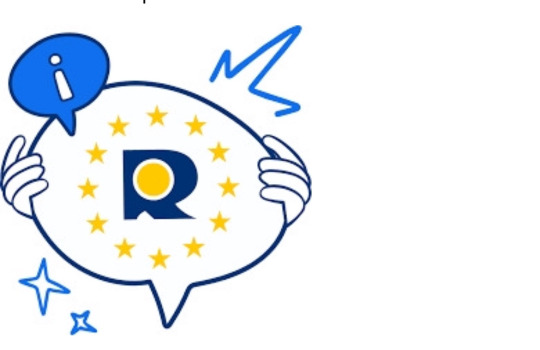
*Class 33: Alcoholic beverages, excluding beers.
5 notes
·
View notes